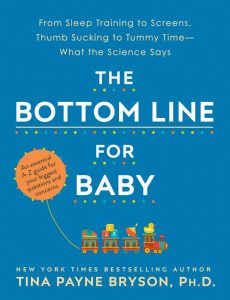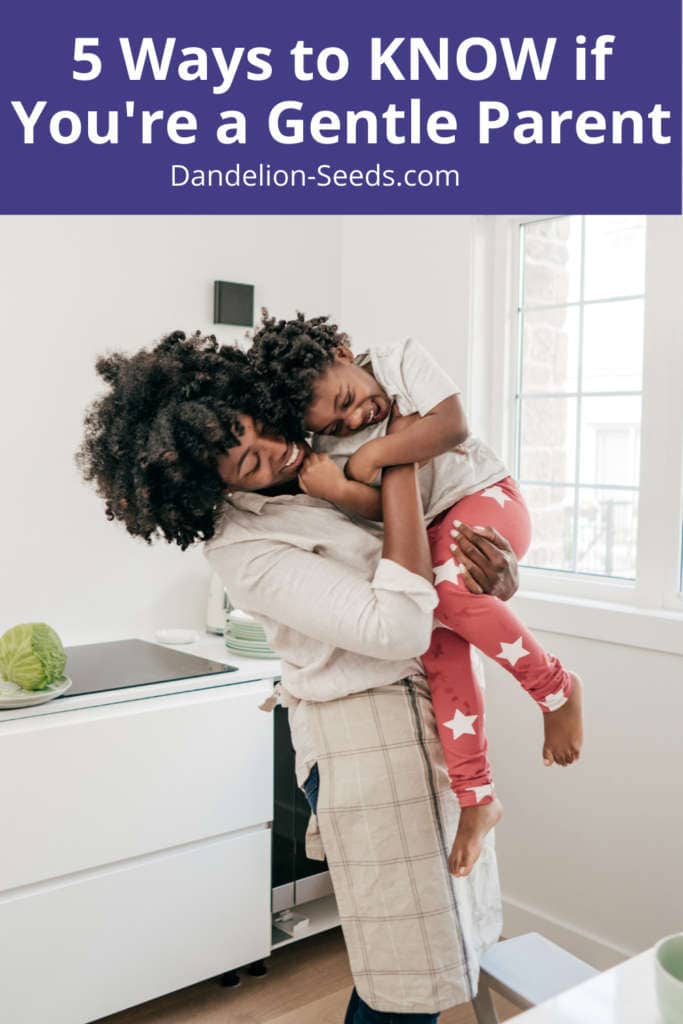
Sign in
Don't have an account with us? Sign up using the form below and get some free bonuses!

Gentle parenting is a paradigm shift from control-based parenting to connection-based parenting.
It's also quite the buzzword these days. While it's great that there's so much more awareness of gentle parenting than there used to be, there's a risk: not everything that goes by that name actually brings any greater sense of peace to the home. There's a lot of false advertising out there.
How can you tell what gentle parenting really is -- and what it isn't?
This section covers what gentle parenting will look like in action, and what parenting styles directly oppose it.
Some adults will justify anything -- including spanking -- if they feel it's done under the guise of gentle parenting, such as when they're no longer upset or if someone other than the offended parent inflicts the punishment. This is clearly not the real deal.
Not only is this form of punishment the opposite of empathy, respect, and any form of positive discipline no matter how the adult is feeling; it's also directly linked to significant harmful effects to the child, such as lifelong trauma and developmental delays.
Likewise, isolation-based strategies, such as the punitive time out or ignoring so-called "attention-seeking" behavior, can also be highly problematic.
These are all forms of authoritarian parenting, which is linked to negative outcomes for children. (source)
These methods may "work" to the extent that they often gain temporary and perceived obedience. However, this relationship is based on parental control and manipulation. Here, parents raise children who fear them. The child will bear the emotional collateral of being raised this way.

At the opposite end of the parenting spectrum is permissive parenting, where the adult embodies little to no competent leadership. They may be more concerned about pleasing the child than leading the child with loving boundaries. In fact, healthy boundaries may be severely lacking or missing entirely. This approach, too -- while on the surface may seem gentle and respectful -- harms the child in the long run. (source)
A lack of healthy boundaries may lead kids to look beyond their family to find guidance wherever they can get it -- peers, social media, or really anyone who's willing to tell them the "rules of life." The risk, of course, is that these "rules" may be highly dangerous to the child.
Although parenting books won't recommend this style, parents who fail to use any form of discipline, including positive and respectful discipline, may feel that their family is conflict-free. They may believe that a family who doesn't talk about conflict is happy.
This false assumption poses two problems:
Related mini-course: Anger Management for Kids: Helpful Strategies for Before, During & After the Upset
These parenting styles are not at all helpful in supporting the child's development. To the contrary, these principles directly oppose the spirit of gentle parenting.

Gentle parenting, as done within the context of authoritative parenting and widely agreed to be the most beneficial for children, is neither authoritarian nor permissive (source).
It's based on connection.
The adult knows that they can't simply parent the child's behavior, even though that's what they live with outwardly. Rather, the child's behavior is always a reflection of what's going on emotionally for them. If the child is "doing well," they're likely thriving inside. If the child is exhibiting troubling or problematic behavior, the child is struggling inside.
It's rather like when a car breaks down: we don't just take it to a car wash to make it look better. We need to get under the hood and repair what's on the inside.
Gentle parenting is parenting from the inside out. It's about going beneath the surface and seeing the child fully.
It's about parent and child doing well for one another because they want to; because the foundation of their very co-existence is mutual respect and trust.

Some people assume that gentle parenting is the same as attachment parenting. Although there certainly can be varying degrees of overlap with attachment parenting, the real answer to whether they're synonymous is this: it depends.
Attachment parenting, a term originally coined by Dr. William Sears, is a gentle parenting style that encompasses the following parenting methods geared towards parenting small children. They're sometimes called the seven B's (source). Each is scientifically supported as noted below.
This refers to immediate and continuous contact between parent and child directly after birth. (scientific validation)

Here, the mother provides the most natural and most readily available solution to respond to baby's hunger. (scientific validation)
This means keeping baby close in a soft carrier, usually keeping the wearer's hands free. It's a key to having a calm and happy baby, and helps form a secure attachment between parent and child. (scientific validation)
The AAP recommends safe room sharing where a healthy and sober parent or parents sleep near baby throughout the first year of life. (scientific validation)
Dr. Sears suggests that baby will never cry for "no reason" and their emotions are every bit as valid as adults'. It's the parent's job to respond with presence, respect, and patience. (scientific validation)
This guidance is to avoid any so-called parenting expert who gives or sells advice to make baby sleep. Sleep comes naturally as part of development rather than training. Sears advocates that we should listen and respond to baby's cues day and night. (scientific validation)
Here, we accept that mothers and fathers still matter; there's no need to lose a sense of self or jeopardize the relationship by devoting all our energy to our kids. (scientific validation)
Individually and collectively, research shows that each of these tools can have positive outcomes for children.
A gentle parent doesn't have to do all these things to love their children and raise wonderful, securely attached kids. Let's look at an example:
A single mom is raising twin baby girls. She loves them dearly. She's also a nurse who works third shift. Her children spend their nights at home with Grandma. They attend daycare a few hours each day while mom sleeps. When mom is with her children, she's present, loving, and fully devoted to them. However, she can't room share with them at night because she's working, and Grandma has said no to a shared room. Although mom pumps milk when she can, she usually supplements with formula. When she's off work, she's too tired to baby wear, although she does hold her babies often.
Can this woman form a secure attachment with her children? Absolutely. Parents can embody gentle parenting without it mirroring Sears' definition.
Although it sounds simple (albeit, perhaps, a bit perplexing), what matters most is that she delights in her children, and that they feel her delight (source). Her presence, kindness, and empathy for their feelings when they're together show her girls the depth of her love.
She's mindful of their time together and, most of the time, stays calm and peaceful despite her own stressors. She models self-care by taking them for walks and spending time in nature. She models gentle parenting in every possible interaction with them.
Conversely, if a parent is going through the motions of attachment parenting but is emotionally spent and has no joy to offer their family, this is not the recipe for raising children who feel particularly special.
Gentle parenting isn't just about making children feel special, of course. Much more, research points to it being about open and ongoing communication that nurtures the relationship between parent and child.
All that said, if the parent chooses behaviour in line with the principles of attachment parenting and they feel delight in this parenting style, then it's a bonus.
You likely noticed that all the components of attachment parenting above apply to young children, where secure attachment is established (or not) in the first years of life (source).
What about older kids? Certainly gentle parenting doesn't end there. Indeed, it doesn't.
Gentle parenting isn't just for babies, of course. What does it look like for older children, as well? These benchmarks help us know for sure that we're using the real deal.

Gentle parenting incorporates the child's perspective when setting "rules" for the family. These rules are different than those of

the authoritarian parent, however: they're not there to control the child.
Gentle parenting isn't about sticker charts as a key to cooperation around boundaries. Gentle parenting isn't defined by rewards and other extrinsic motivation any more than it is by punishments. Instead, the adult will listen to the child, respect their perspective, and work to find win/win scenarios and boundaries that are mutually acceptable.
Gentle parenting models these attributes, even when parents are struggling or facing their children's challenging behaviour. Parents view their kids as allies. Problems are external issues to be solved, rather than internal issues that reflect the state of the relationship.
When problems arise, gentle parents pause and ask themselves, "How do I want my child to see me respond?" They realize that co-regulation is a powerful tool in gentle parenting and a sign of a healthy bond. Once parents and children find their calm together, they can create mutually acceptable solutions.
Adults often lean on play and connection as teaching tools rather than any form of punishment, although certain consequences do exist in gentle parenting.
Gentle parents embody not only the "Golden Rule" -- treating others as they'd like to be treated -- but also another version, the "Platinum Rule" -- do to others what they'd want done to them.
The gentle parent realizes that it's much healthier for a child to release their feelings than keep them pent up inside. Although not all behavior is acceptable, gentle parenting works to encourage healthy expression of emotions.

Gentle parents encourage children to share what they feel, even if they're upset with each other -- and even if it's sometimes uncomfortable. Here, it's emotionally safe to do so because they work to genuinely understand the other's perspective.
It's helpful for many parents to set intentions about the specific ways they want to model respect for their kids. Some begin each morning with a prayer or meditation about specifically how they want to be peaceful that day. This approach can help tremendously.
The final important component to note about gentle parenting is that no person in the world is perfect. Everyone makes mistakes. When gentle parents mess up, they model healthy repair and work to make things right with their children. In doing so, they raise children who know that modeling accountability for one's actions, and allowing grace for mistakes, is an integral part of healthy connections.
Although gentle parenting may feel daunting to those who haven't practiced it before, please know that it's not a race to perfection. No one would expect that of you. Just take that one next step. As they say, Rome wasn't built in a day (and no one's asking you to build Rome).
Choose one small way to connect with your child, and you're already on your way.
